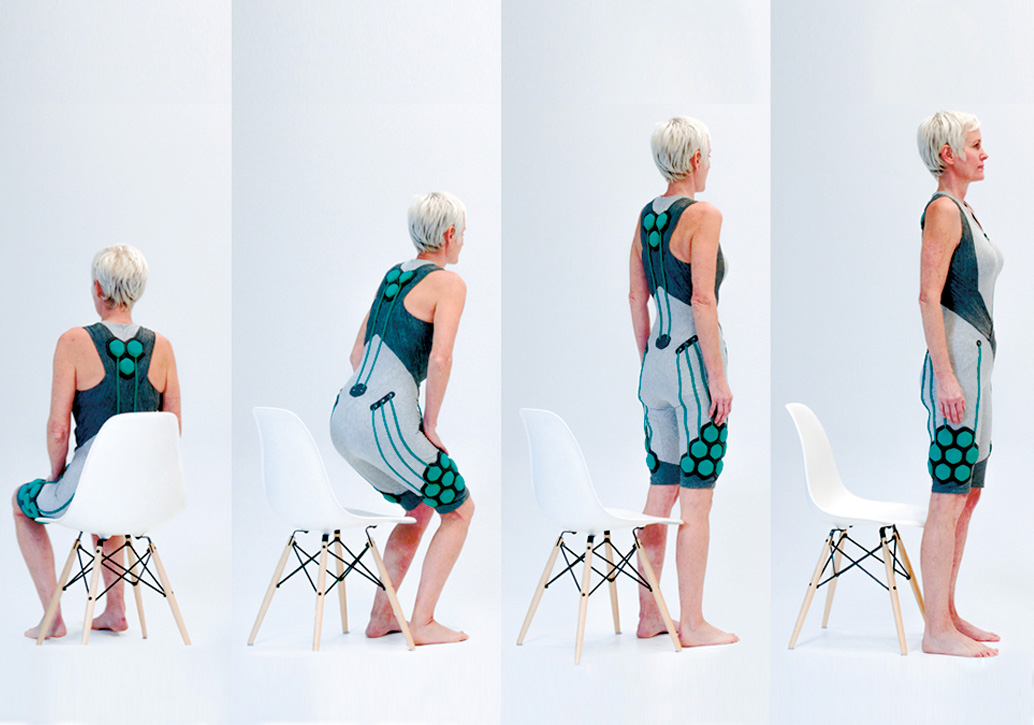Presented for the first time at the “NEW OLD” exhibition at the UK’s London Design Museum, the Aura Powered Suit is the brainchild of Superflex a start-up birthed in the robotics lab of SRI International in Palo Alto, California.
A team of leaders in textiles, industrial design, robotics biomechanics and data science have used ground-breaking technologies to create a wearable powered suit that showcases what today’s tech can do for an aging population.
The “NEW OLD” exhibition was the perfect setting for presenting this new concept because, all too often, mobility issues keep people captive in their own homes.
While the thought of most robotic technologies and artificial intelligence systems conjures up dystopian notions, the Aura Powered Suit, which was originally conceived for the armed forces to prevent injury and increase endurance, seems to be easy to use for athletes, the elderly and those with a disability. With its functional motors, sensors and artificial intelligence embedded into a stylish, lightweight and flexible fabric, Superflex’s Aura Powered Suit provides next-generation support for the user’s torso, hips and legs. By reacting to the body’s natural movements and adding power to naturally complement the user’s strength, the suit can help with getting up, sitting down and staying upright. Its integrated electronic muscles add intelligent wearable strength and natural mobility to a person’s muscles and joints.
“Powered Clothing amplifies an individual’s ability to move freely in the world,” says Superflex co-founder Rich Mahoney. “It changes perceptions of what’s possible and means that people will lead fuller, healthier and more rewarding lives.” Over time, there is also potential for the suit to actually improve muscle strength, balance and co-ordination for the wearer.
Including its embedded hardware, the suit will be insignificant in weight and deliver an exponential amount of strength. Using biomimicry, it is anatomically aligned to the natural muscular composition of its wearer with maximum comfort in mind.
Its hard technology components such as motors, battery and control boards are designed into hexagonal, low-profile pods. These pods are attached to fabric origami fold-ins that allow movement in three dimensions, allowing the hardware to expand, contract and move with the wearer. This enables a modular and scalable system that adapts to different users’ heights and muscular needs. And, to encourage daily use, the hardware pods can be removed when the garment needs cleaning.
While the technology inside the pods is complex, the actual fabric itself is designed with beautiful intricacies to enhance its functionality. It can be comfortably worn under any outfit. It grips the body using a V-shaped band that holds tightly around certain points of the body to maximize ergonomics and lumbar support.
“The design and framework stand apart from the typical aesthetic for the aging market, with comfort, performance and style,” suggests Mahoney.
“[Powered Clothing is] smart yet friendly, invisible yet connected, and we hope it will offer users the profound physical and hidden emotional benefits that remaining active bring.”













